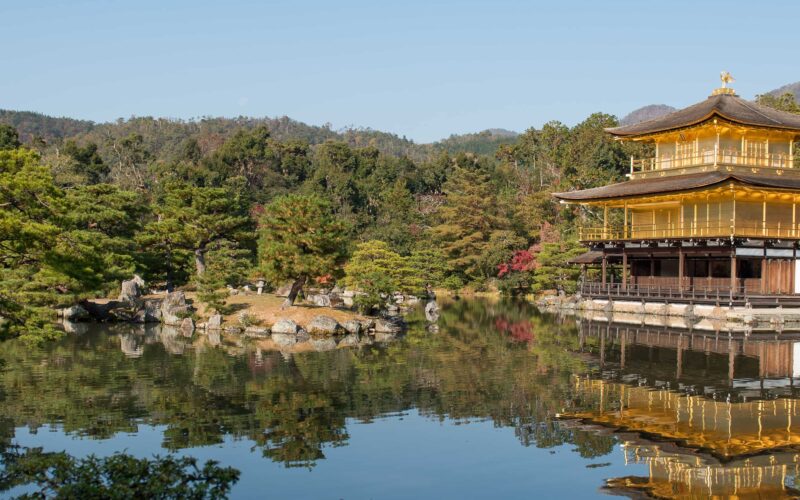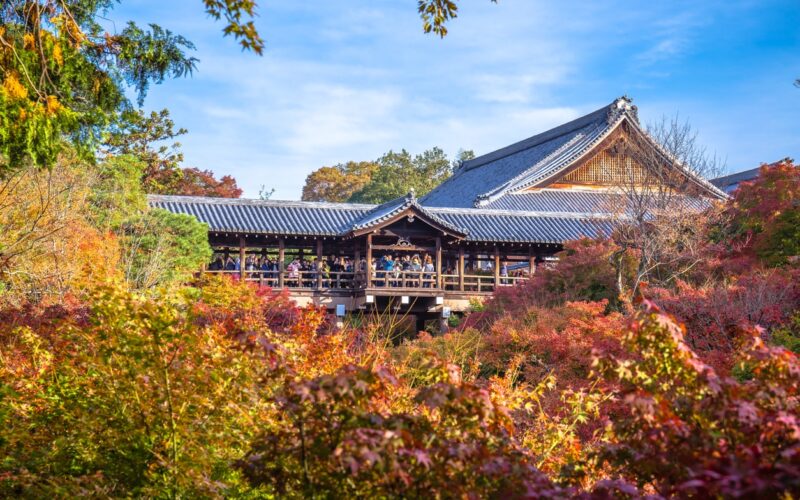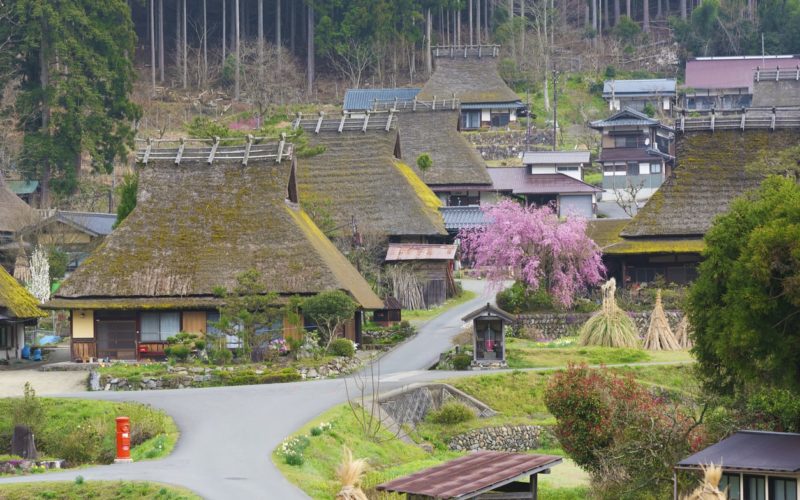Shimogamo Shrine
Where the power of god meets a primeval forest.
One of the oldest Shinto shrines in Japan, Shimogamo Shrine and the primeval forest that surrounds it predate Kyoto but reflect and inspire it, too. Spreading across an area roughly three times the size of the Tokyo Dome baseball stadium, all 55 of its buildings are recognized in its UNESCO World Heritage Site listing, including a shrine dedicated to beauty and many more interesting spots to check out while sightseeing in Kyoto.

Japanese lanterns at Shimogamo Shrine.
History
The bright vermillion of the shrine’s towering torii gates and two-storied entrance gate contrast brilliantly with the surrounding lush greenery. Also known by its official name of Kamomioya Shrine, this site enshrines the creator and guardian of Kyoto, and ancestor of the local Kamo clan, Kamotaketsunomi-no-mikoto, who is venerated at the west altar of the main sanctuary. His daughter, Tamayorihime-no-mikoto, is revered at the eastern altar.
The shrine benefited from the good favor of the imperial court and aristocracy and prospered along with Kyoto.
The first shrine building was erected during the reign of Emperor Tenmu (675-686). However, it is perhaps not the buildings that best convey to visitors the history and gravity of Shimogamo, but the forest that surrounds them. Known as Tadasu no Mori, this vast area contains two streams and more than 5,000 trees, some of which are up to 600 years old. It is said that in ancient times, local people came to the forest to adjudicate their conflicts.
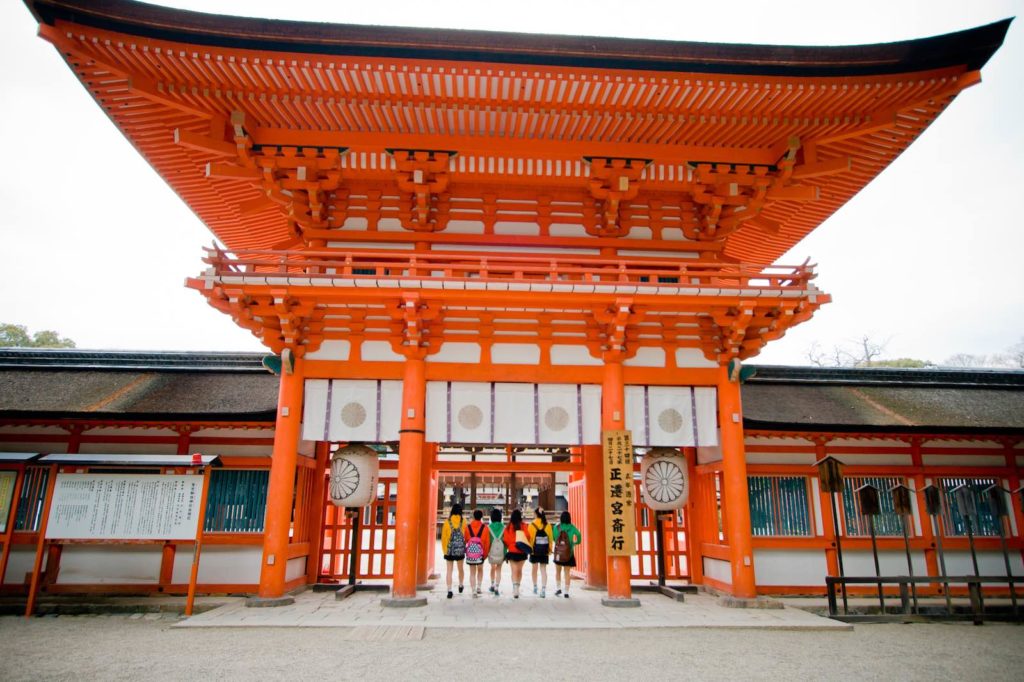
Shimogamo Shrine is the common name of an important Shinto sanctuary in Kyoto city.
The shrine benefited from the good favor of the imperial court and aristocracy and prospered along with Kyoto. During its time as the nation’s capital in the Heian period (794-1185), land grants gave the shrine a total of around 689 hectares (around 1,700 acres) of land throughout Japan.
Shimogamo may have once been connected to its sister shrine, Kamigamo Shrine, which is situated further upstream along the upper Kamo river. It venerates the thunder god Wakeikazuchi, who is the son of Tamayorihime-no-mikoto. His mother is revered at Shimogamo as a deity of productive marriage and parenting.
What you’ll find at Shimogamo
The main shrines typify the architectural style of the Heian period (794-1185) with their long, flowing rooves in the nagare zukuri style. They are positioned behind a group of subshrines collectively known as the Koto Shrine. Each of these seven small shrines serves people of particular zodiac signs, from those born in the year of the rat, through to those born in the year of the boar. Worshipping here is said to bring you good fortune, and success in business.
Another of the key structures is the Mitarashi Shrine, which is at the far end of the small lake to the east. This shrine is dedicated to the deity of purification and clean water and sits above an underground spring. Autumn purification festivals are held here. You may have heard the name of this shrine used in reference to small, round rice cakes—mitarashi dango. The name is said to have come from their resemblance to water bubbles produced by this spring.
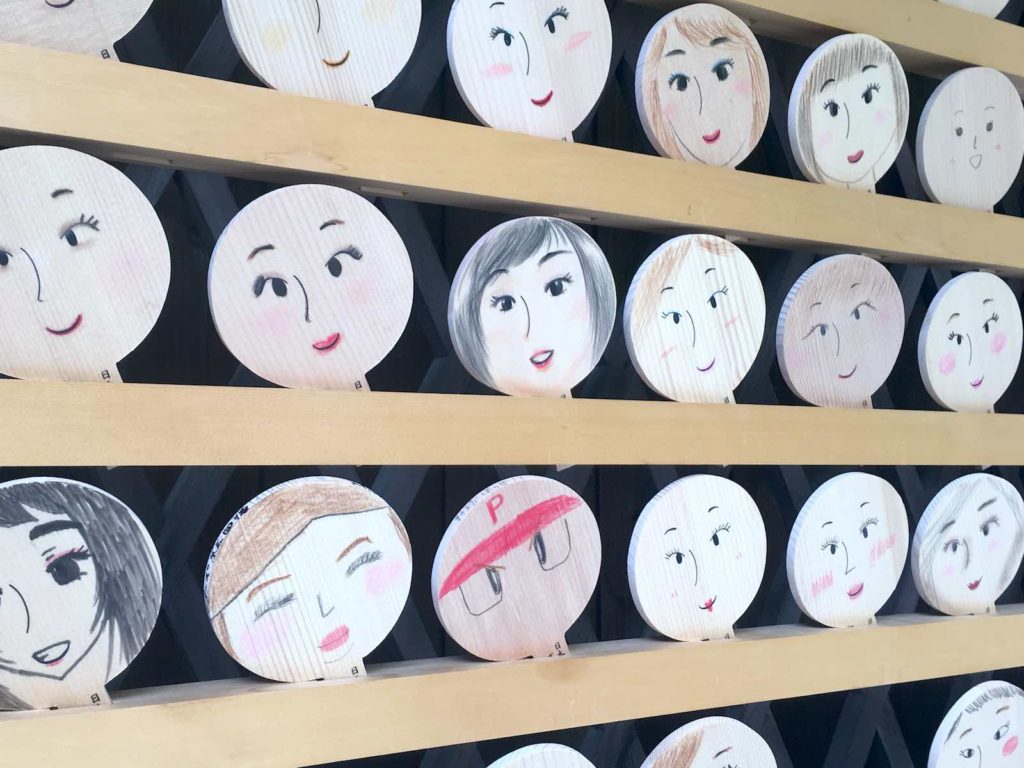
Photo by: Photo by Kirsty Kawano Kawai shrine votive boards.
There are two other interesting shrines in the wider grounds. One — Kawai Shrine — is located at the southern end, near the start of the long forest path. The god of this shrine is a guardian of women, and it has long been considered one of the most important shrines within the Shimogamo complex. People also pray for beauty here, and the shrine sells votive tablets in the shape of mirrors that worshipers can illustrate in their own likeness in order to attain beauty in their hearts, as well as their faces.
Just before the entrance to Shimogamo’s main complex is the Aioi Shrine. This is dedicated to the god of good marriage. To the left of this shrine is “Renri no Sakaki,” two holly trees that have intertwined to become one.
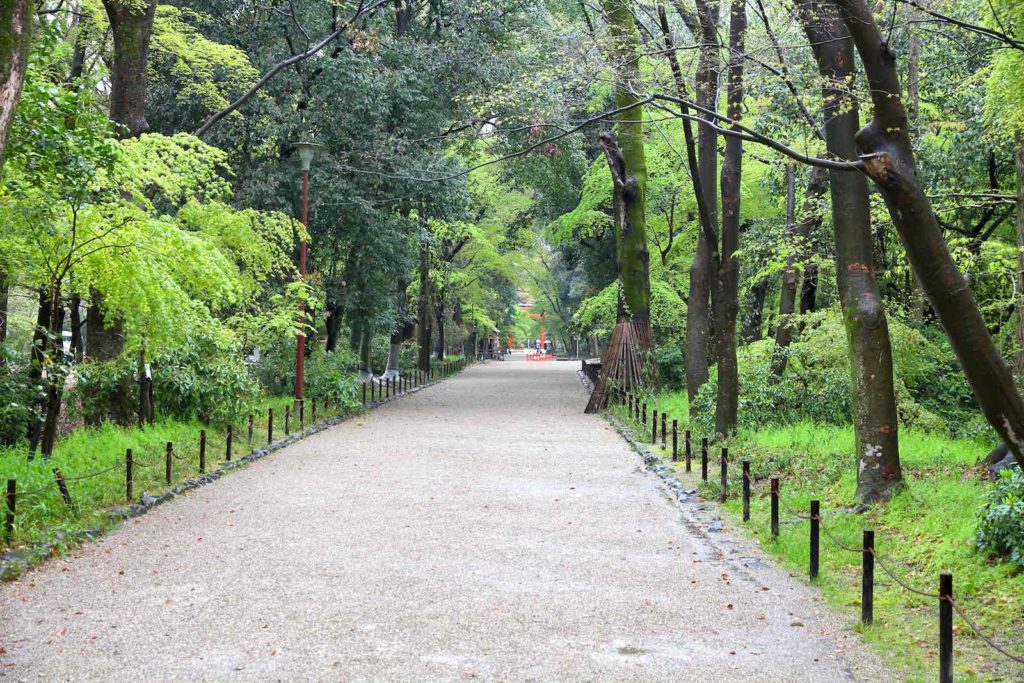
The forest of Shimogamo gardens.
Know before you go
Shimogamo Shrine uses the hollyhock as its emblem. In a play on old Japanese words, the plant’s name equated with those of “meeting the great power of god.” The plant is featured in one of Kyoto’s three biggest festivals, the Aoi Matsuri. This procession, held on the morning of May 15 each year, starts from the Imperial Palace and stops at Shimogamo before heading up to Kamigamo Shrine. More than 500 people dressed in Heian period costumes participate in the parade.
Anime fans will know the word “Shimogamo” as the family name of the main characters in Uchoten Kazoku, The Eccentric Family — a shape-changing family of tanuki (raccoon dogs) that lives at the shrine. Just south of Tadasu no Mori are the turtle stepping stones that appear in the anime K-On! and Tamako Market.
Topics: kyoto, Shimogamo Shrine, shrines
